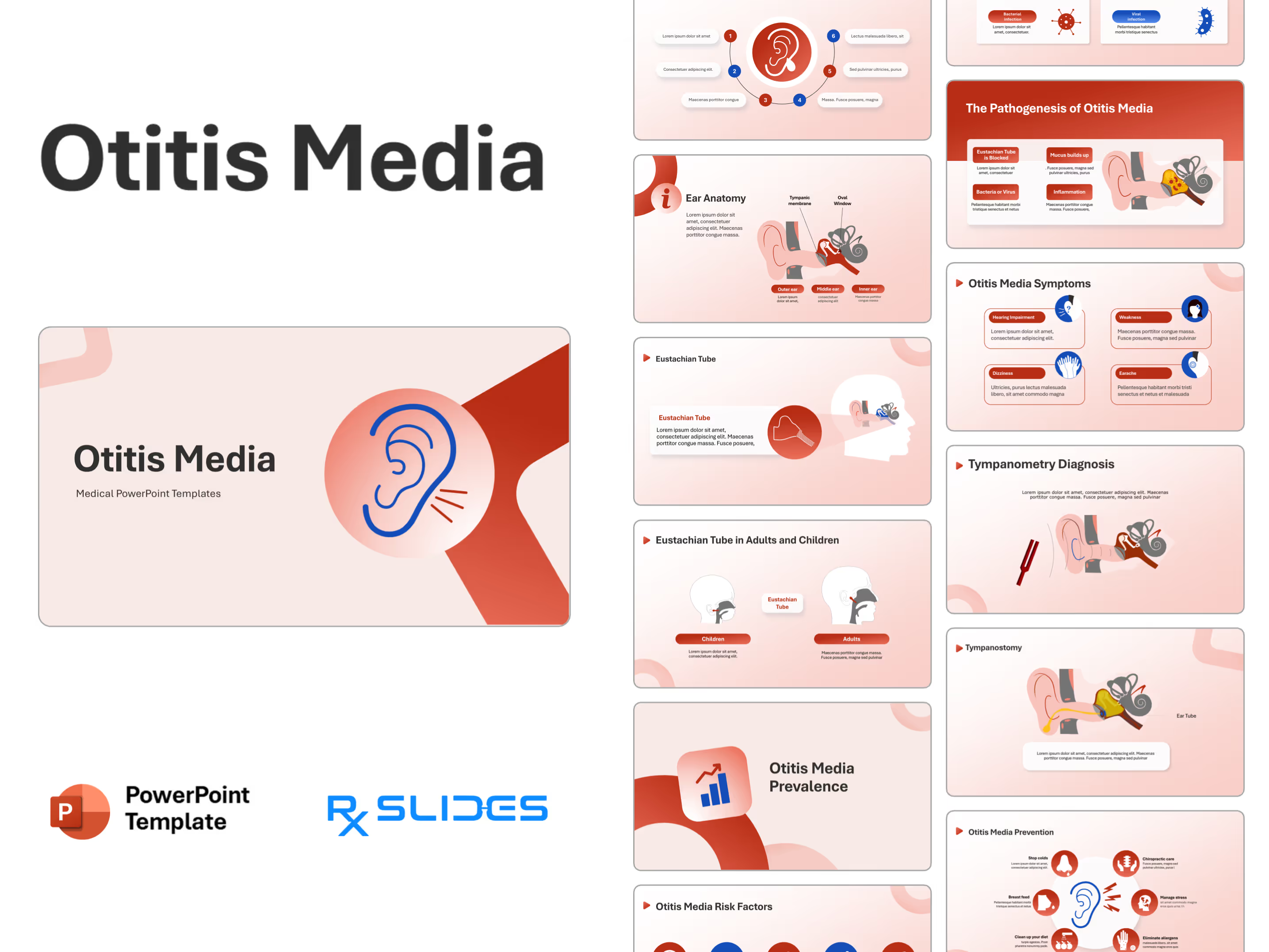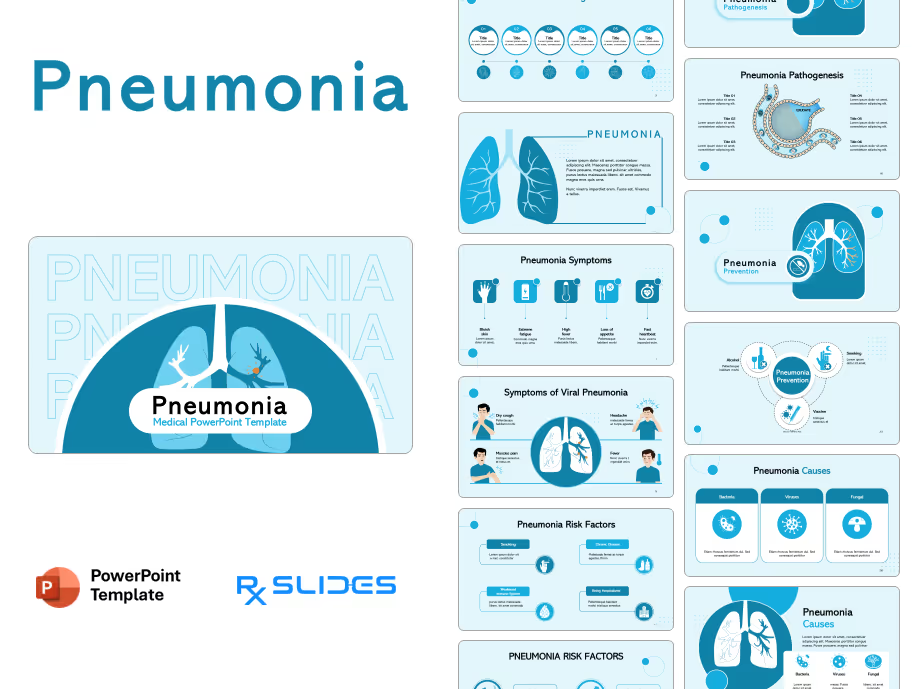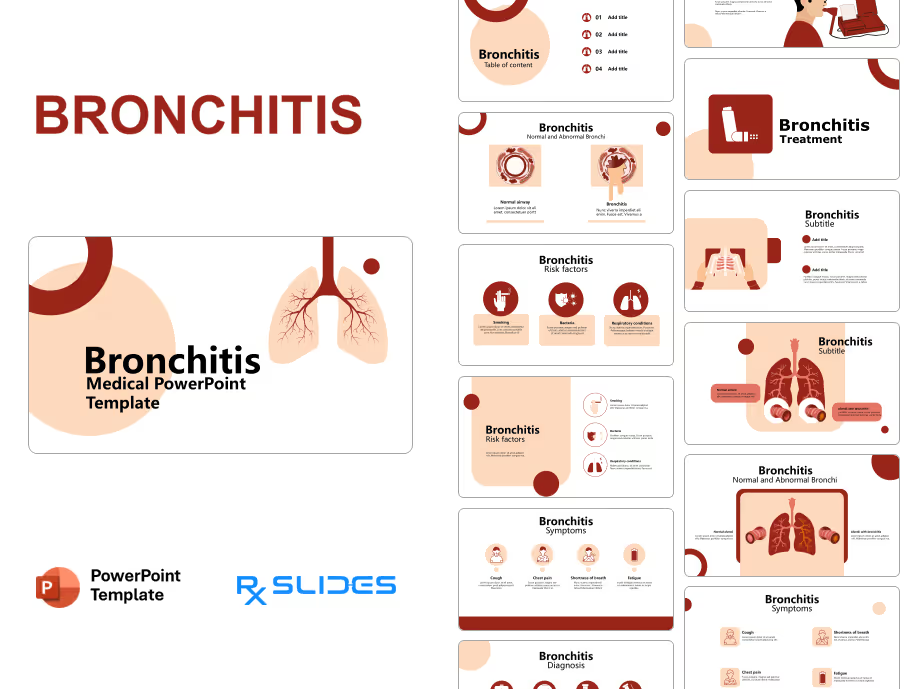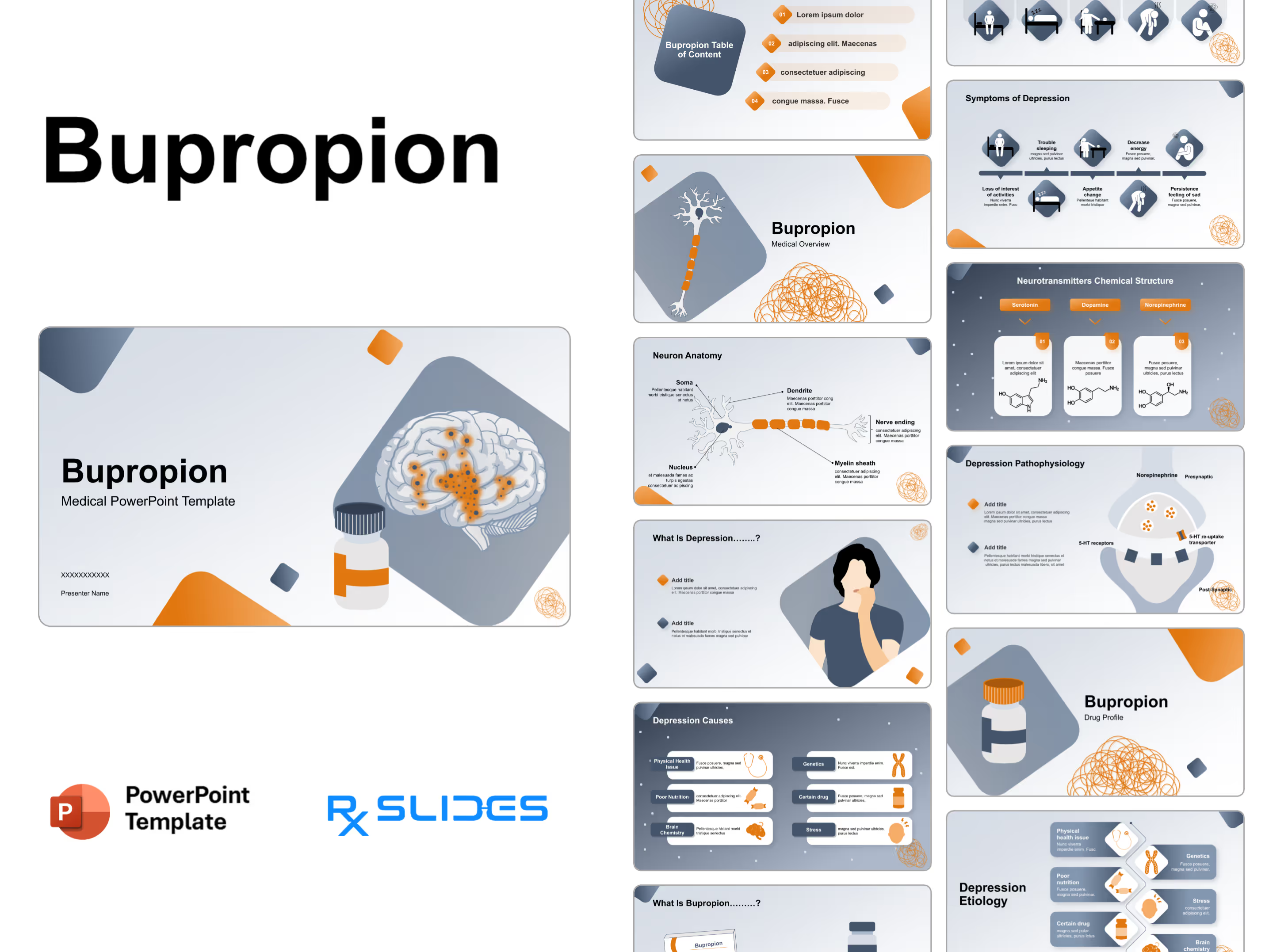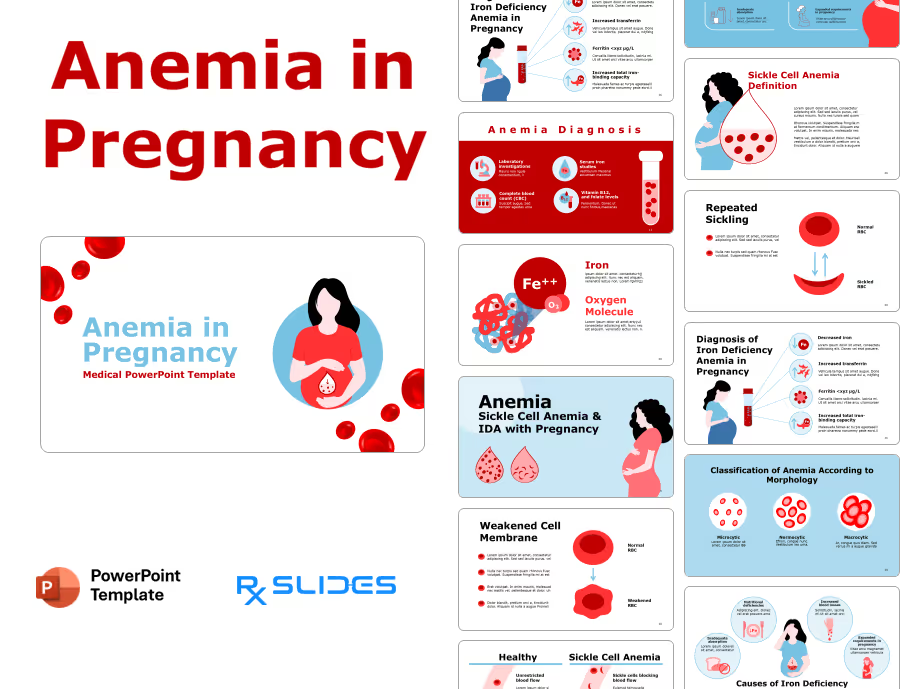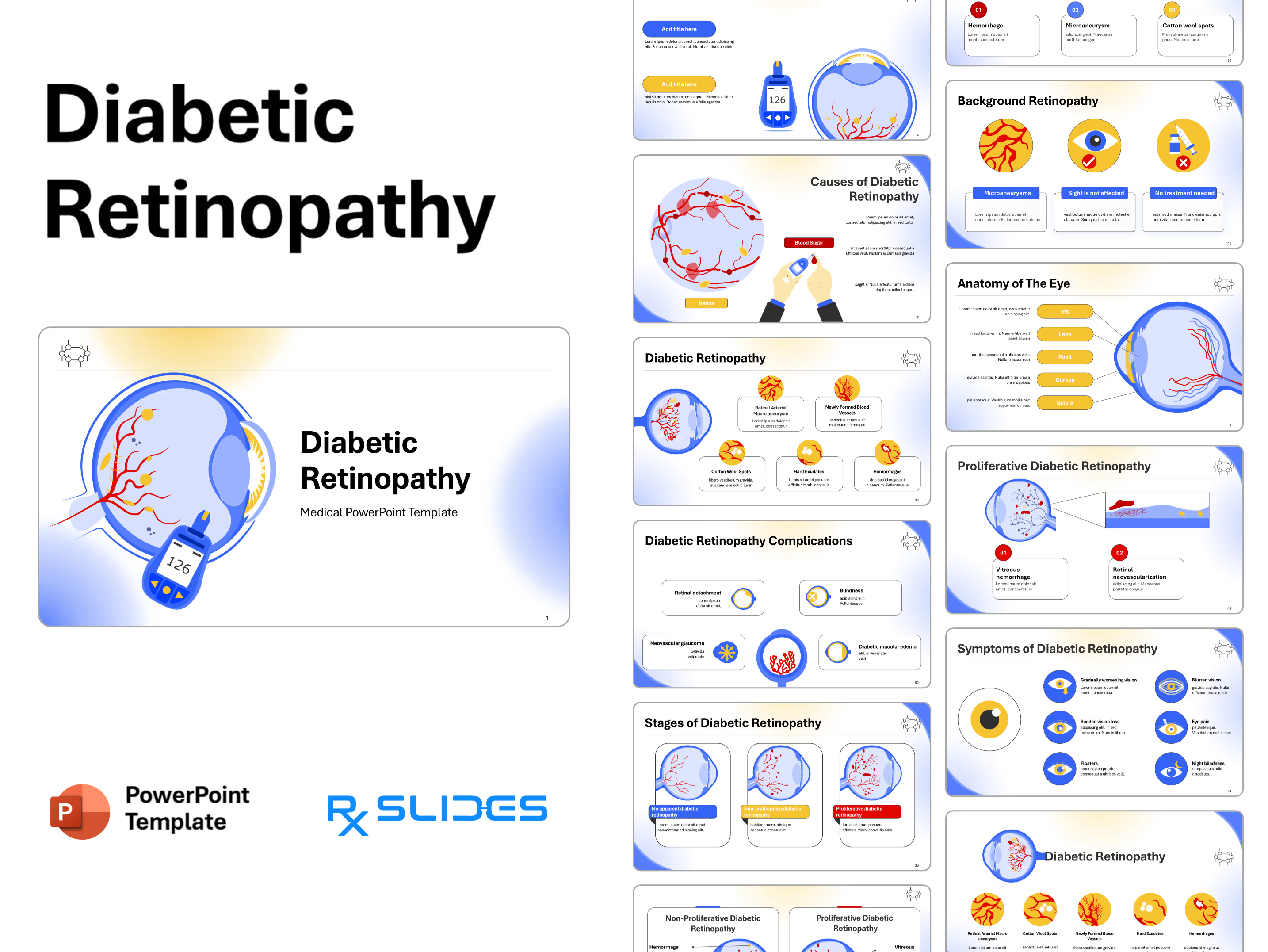Metformin PowerPoint Template

Metformin PPT: Medical PowerPoint Template
- The Metformin PPT template is a dynamic medical PowerPoint template that will offer you impressive options in your presentations:
- This template empowers you to create clear, concise presentations that effectively communicate key information.
- RxSlides is a Trusted partner for medical professionals, our medical slides are Developed by medical experts to meet the standards you expect.
- This template lets you create impactful presentations quickly and efficiently to save time and maximize impact.
Metformin PPT Template Content
- Nice looking cover slides to start your Metformin PPT presentation with.
%2520.avif)
- Editable table of contents that will help you explain the contents of your Metformin PPT presentation.
%2520.avif)
Diabetes overview
- Diabetes overview slides include illustrations for the following topics:
- The physiology of insulin and how insulin works to keep blood glucose levels.
- Diabetes types (type 1 and type 2).
- Pathogenesis of type 2 diabetes.
%2520.avif)
Metformin overview
- Dynamic slides include Metformin's structure and definition, in the Metformin PPT template.
Structure
- Biguanide: N-dimethyl biguanide with a guanidino group, a key pharmacophore.
Definition
- According to Lexicomp, 2023 metformin is considered a First-line oral antihyperglycemic agent.
- Reduces hepatic glucose production and increases skeletal muscle glucose uptake without stimulating insulin secretion.
Dosage
- Metformin immediate-release formulations, Metformin extended-release tablets (XR), Metformin combination products.
- Metformin is available in tablets using the brand name (Glucophage, Glucophage XR) produced by Merck.
- Tablets of 500 mg, 850 mg and 1000 mg are available.
Brand names
- Glucophage: Produced by Merck, Glucophage is a well-established brand with immediate-release and extended-release formulations.
- Axpinet produced by GlucoRx Ltd.
- Diagemet produced by Genus Pharmaceuticals.
%2520.avif)
Metformin indications
- The indications of metformin are visualized with icons explaining the following symptoms:
- Type 2 Diabetes Mellitus (T2DM): First-line oral antihyperglycemic for T2DM, particularly in overweight/obese patients and those failing first-line lifestyle interventions.
- Prediabetes: May reduce progression to T2DM and improve glycemic control.
- Polycystic Ovary Syndrome (PCOS): Improves insulin sensitivity, menstrual regularity and fertility.
- Treatment oligomenorrhea due to PCOS.
- Gestational Diabetes Mellitus (GDM): Off-label use but may be considered for GDM management in select cases.
- Antipsychotic-induced weight gain: Off-label use.
%2520.avif)
Metformin black box warning
- Metformin has a black box warning for lactic acidosis, which is the excessive accumulation of lactic acid in the blood. It is a severe issue that may result in death.
- Symptoms of lactic acidosis are explained with medical icons:
- Unexplained nausea, vomiting, diarrhea.
- Abdominal pain and muscle cramps.
- Weakness, fatigue, drowsiness.
- Deep, rapid breathing (Kussmaul breathing).
%2520.avif)
Metformin pharmacodynamics
- You can notice that Metformin pharmacodynamics graphs explain how the metformin affects fasting plasma glucose (FPG) and Glycosylated hemoglobin (HbA1c)
- Medical illustrations explain that metformin decreases liver glucose production and decreases intestinal glucose absorption.
%2520.avif)
Hepatic glucose production mechanism
- A dynamic animation explains the hepatic glucose production mechanism to understand the metformin mechanism of action.
- Animated illustration starts inside mitochondria; NADH converts to ATP by the support of a complex one reaction.
- The ATP breaks free from mitochondria and is ready to support the glucogenesis process.
- After that, glucagon acts on glucagon receptors expressed on hepatic cells (Glucagon is one of the mediators that will increase the blood glucose level).
- This bound activates the adenyl cyclase system so that ATP can convert to cAMP by the action of the adenyl cyclase system.
- As illustrated in Metformin PPT slides, cAMP activates protein kinase A, a phosphorylating enzyme that can trigger many enzymes responsible for increasing glucose.
- Protein kinase A activates the glycogen phosphorylase enzyme responsible for Glycogenolysis.
- Metformin PPT template explains Glycogenolysis in this mechanism; Glycogenolysis is the breakdown of glycogen into glucose with the asset of the glycogen phosphorylase enzyme.
%2520.avif)
Metformin mechanism of action
- The Metformin mechanism of action is illustrated by animations explaining how Metformin decreases glucose in dynamic slides of the Metformin PPT template.
- Metformin enters the hepatic cell through the OCT1 receptor. Now, it can act on a complex reaction that inhibits the production of ATP.
- The AMP level increases due to the ATP level falling, leading to an increase in the AMP to ADP ratio. This range of AMP concentrations decreases glucagon-related activities by inhibiting the adenyl cyclase system. Therefore, ATP cannot be changed into a camp.
%2520.avif)
Pharmacokinetics
- Pharmacokinetics slides include dynamic charts and graphs visualizing (Metformin absorption, protein binding, metabolism, half-life and Metformin route of elimination).
%2520.avif)
Adverse effects
- Adverse effects are explained with visuals of Gastrointestinal side effects, including nausea, vomiting, diarrhea and abdominal discomfort.
- These adverse reactions are often dose-dependent and transient.
- Metformin black box warning for lactic acidosis is explained in Metformin PPT slides. As visualized in this section, lactic acidosis is Rare but potentially fatal, more likely with renal impairment, tissue hypoxia, or specific drug interactions.
- A colored medical infographic in Metformin PPT slides is used to visualize toxicity stages ending with lactic acidosis.
Toxicity
- A carefully designed PowerPoint slide shows insights into the toxicity of Metformin, including hypoglycemia (we reach this case first with some increase in dose) and lactic acidosis (a severe case of toxicity).
%2520.avif)
Interactions
- Drug interactions include visual infographic slides explaining specific drug interactions that can raise the risk of lactic acidosis and drug interactions that may enhance the hypoglycemic effect of Metformin.
%2520.avif)
RxSlides visuals for metformin PowerPoint template
- A Set of PowerPoint icons and illustrations related to Metformin disease will help you customize the content of this 100% editable presentation according to your content and audience interest.
%2520.avif)
Features of the Template
- 100% editable PowerPoint template.
- Editable colors, you can change according to your presentation style and company branding guidelines.






